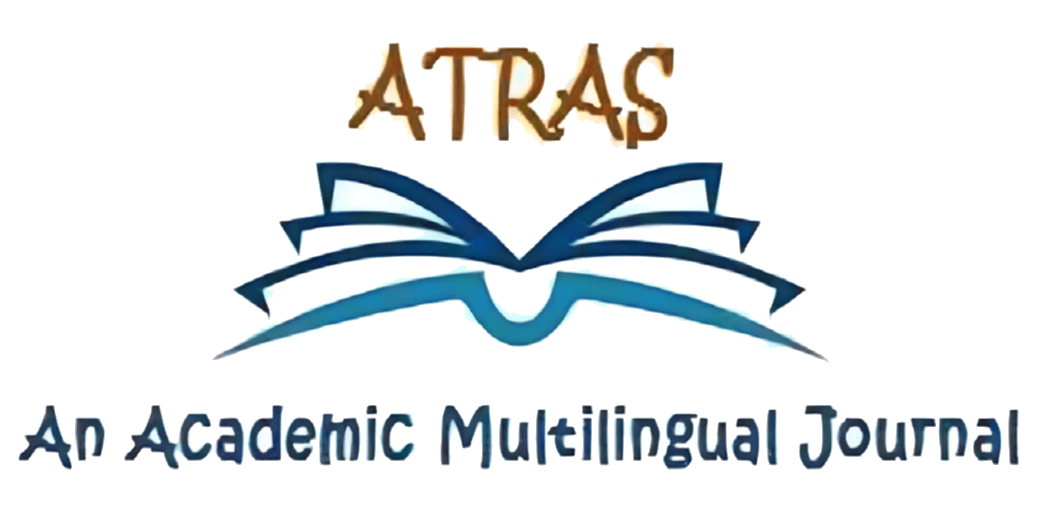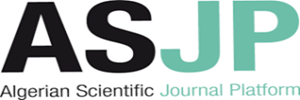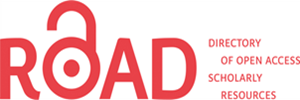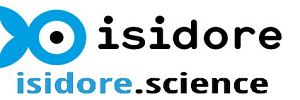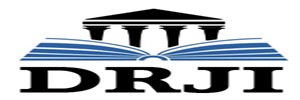Digital Transformation and E-Learning Integration during the Post-Pandemic Era
in the Algerian Higher Education Sector
Imane AMEUR
Amar Telidji University, Laghouat, Algeria
i.ameur@lagh-univ.dz
https://orcid.org/0009-0002-6038-5363
Mustapha GASMI
Amar Telidji University, Laghouat, Algeria
mu.gasmi@lagh-univ.dz
https://orcid.org/0000-0001-9839-5941
Cherifa BENDAOUD
Amar Telidji University, Laghouat, Algeria
c.bendaoud@lagh-univ.dz
https://orcid.org/0009-0006-3847-8300
Abstract
Over the past twenty years, major technological breakthroughs have sparked the development of new educational methodologies, notably digitalization and E-learning, which have garnered increased attention. The primary aim of this study is to explore the utilization and integration of ICT and E-learning in higher education settings. It provides a historical overview of higher education in Algeria and offers a foundational understanding of digital transformation, particularly in ICT and E-learning within higher education. To achieve this aim, an online questionnaire was conducted with a random sample comprising students and faculty members of the Computer Science Department at Laghouat University, spanning various academic levels. The study’s findings underscore the efficacy of digitalization and E-learning as valuable tools in the learning process while revealing the opportunities and challenges associated with their implementation. This research seeks to raise awareness among educators and learners regarding using ICT and E-learning in education, fostering readiness for embracing digital transformation, particularly in the post-COVID-19 era where distance learning has become imperative for global wellbeing.
Keywords: Digitalization, E-learning, Higher Education, ICT, Integration, Post Pandemic
DOI:
https://doi.org/10.70091/atras/AI.3
How to Cite this Paper :
Ameur, I., Gasmi, M. , & Bendaoud, C. (2024). Digital Transformation and E-Learning Integration during the Post-Pandemic Era in the Algerian Higher Education Sector. Atras Journal, 5(Special Issue), 50-68
References:
Abdaoui, M., & El Aggoune, A. (2024). Online Learning through Google MeetTM for Moodle in the Post-COVID Era. International Conference on Teaching and Learning in Post-COVID: Reality and Expectations, 1-8.
Al-Adwan, A., & Smedley, J. (2012). Implementing E-learning in the Jordanian Higher Education System: Factors affecting impact. International Journal of Education and Development using ICT, 8(1), 121-135. DOI: https://www.learntechlib.org/p/188017/
Almarabeh, T. (2014). Students’ Perceptions of E-Learning at the University of Jordan. International Journal of Emerging Technologies in Learning, 9(3), 31-35. DOI:10.3991/ijet.v9i3.3347
Alturise, F., & Alojaiman, B. (2013). Benefits and challenges of using ICT in Saudi Arabia universities: A literature review. International conference on advanced computing, Engineering and Learning Technologies, 2, 2-46.
Arabeche, Z., & Soudani, A. (2021). Perception of E-learning during the health crisis of COVID-19: the case of Algerian university teachers. Journal of Information Technology Management, 13(2), 154-172. DOI: 10.22059/jitm.2021.80360
Aung, T. N., & Khaing, S. S. (2015). Challenges of implementing E-learning in developing countries: A Review. International Conference on Genetic and Evolutionary Computing, 405-411. DOI: 10.1007/978-3-319-23207-2_41
BBhatia, R. P. (2011). Features and Effectiveness of E-learning Tools. Global Journal of Business Management and Information Technology, 1(1), 1-7.
Bhuasiri, W., Xaymoungkhoun, O., Zo, H., Rho, J. J., & Ciganek, A. P. (2012). Critical success factors for E-learning in developing countries: A comparative analysis between ICT experts and faculty. Computers & Education, 58(2), 843-855.
DOI: 10.1016/j.compedu.2011.10.010
Boudia, C., & Bengueddach, A. (2023). Predicting ICT Students’ Profile Using AI and Social Networks for a Post-Pandemic Classroom. International Journal, 10(3), 3339-3353.
Challis, L., Lidgey, J., & Robertson, C. (2003). E-Learning: The way forward. Teaching Forum, 51, 6-8.
Christensson, P. (2008). Web 2.0 Definition. Retrieved 2024, Sep 23. https://techterms.com/definition/web20
Conner, L., & Sliwka, A. (2014). Implications of research on effective learning environments for initial teacher education. European Journal of Education, 49(2), 165-177.
DOI: 10.1111/ejed.12081
Djoudi, M. (2010). E-learning in Algeria: Experiences On E-Learning in Algerian Universities. E-Learning Practices, Cases on Challenges Facing E-Learning and National Development, ISBN, 978-975.
Djoudi, M. (2018). Algeria. E-learning in the Middle East and North Africa (MENA) region, 1-25. DOI: 10.1007/978-3-319-68999-9_1
El Kechebur, B. (2017). The Emergence of the New Technologies in Education in Algeria: Case Study on Engineering Software. Research Journal of Business and Management, 4(2), 170-176. DOI: 10.17261/Pressacademia.2017.472
Gheraf, N. (2014). E-Learning and The Future of Algerian University Reforms. Laghouat University publication.
Hamouche, A. (2007). L’utilisation De La Technologie En Algérie. L’information Et L’éducation : Etat Des Lieux Et Perspectives, Laghouat, 31-46.
Holmes, B., & Gardner, J. (2006). E-learning: Concepts and practice. Sage. London, 1-200.
Jaggi, A. (2015). Role of ICT in Rural Education. Academics World 7th International Conference, 43-45.
Kenan, T., Pislaru, C., & Elzawi, A. (2012). Analyzing the effectiveness of E-learning based on national and international cultures and approaches to pedagogy. UKAIS Conference on Information Systems, 1-12.
Kim, W. (2007). Towards a definition and methodology for blended learning. Proceedings of Workshop on Blended Learning, 1-8.
Kwofie, B. (2015). E-learning implementation in higher education institutions. Doctoral dissertation, Department of Electronic Systems, Aalborg University.
Nyandara, Z. I. (2012). Challenges and opportunities of technology-based instruction in open and distance learning: A comparative study of Tanzania and China. Researchgate, 130-145.
Orr, S., & Lisa, H. (2007). A Study of West Virginia P-12 Teachers’ Use of the Internet as a Professional and Instructional Tool. Society for Information Technology & Teacher Education International Conference, 1633-1640.
DOI: https://www.learntechlib.org/primary/p/24800/
Qureshi, I. A., Ilyas, K., Yasmin, R., & Whitty, M. (2012). Challenges of implementing E-learning in a Pakistani university. Knowledge Management & E-Learning: An International Journal, 4(3), 310-324.
Sife, A., Lwoga, E., & Sanga, C. (2007). New technologies for teaching and learning: Challenges for higher learning institutions in developing countries. International Journal of Education and Development using ICT, 3(2), 57-67.
DOI: https://www.learntechlib.org/p/42360/
Unwin, T. (2008). Survey of E-Learning in Africa. www. E-learning-africa. Com/Publicationssurvey/E-learning-Africa. pdf
Uys, P. M. (2003). E-Learning at the University of Botswana: a bi-annual reflection on progress. Lonaka Bulletin, 5-12.
Watson, D. M. (2001). Pedagogy before technology: Re-thinking the relationship between ICT and teaching. Education and Information Technologies, 6(4), 251-266.
DOI: 10.1023/A:1012976702296
Wong, S. L. (2010). Guest Editorial: Impact of ICT on teaching and learning in Asia: Focusing on emerging trends, patterns, and practice Siew Ming Thang the National University of Malaysia, Malaysia. International Journal of Education and Development using Information and Communication Technology, 6(3), 3-6.
Yahiaoui, F. et al. (2022). The impact of e-learning systems on motivating students and enhancing their outcomes during COVID-19. Frontiers in Psychology, 13, 874-181.
DOI: 10.3389/fpsyg.2022.874181

Copyright for all articles published in ATRAS belongs to the author. The authors also grant permission to the publisher to publish, reproduce, distribute, and transmit the articles. ATRAS publishes accepted papers under the Creative Commons Attribution-NonCommercial 4.0 International (CC BY-NC 4.0) License. Authors submitting papers for publication in ATRAS agree to apply the CC BY-NC 4.0 license to their work. For non-commercial purposes, anyone may copy, redistribute material, remix, transform, and construct material in any media or format, provided that the terms of the license are observed and the original source is properly cited.
